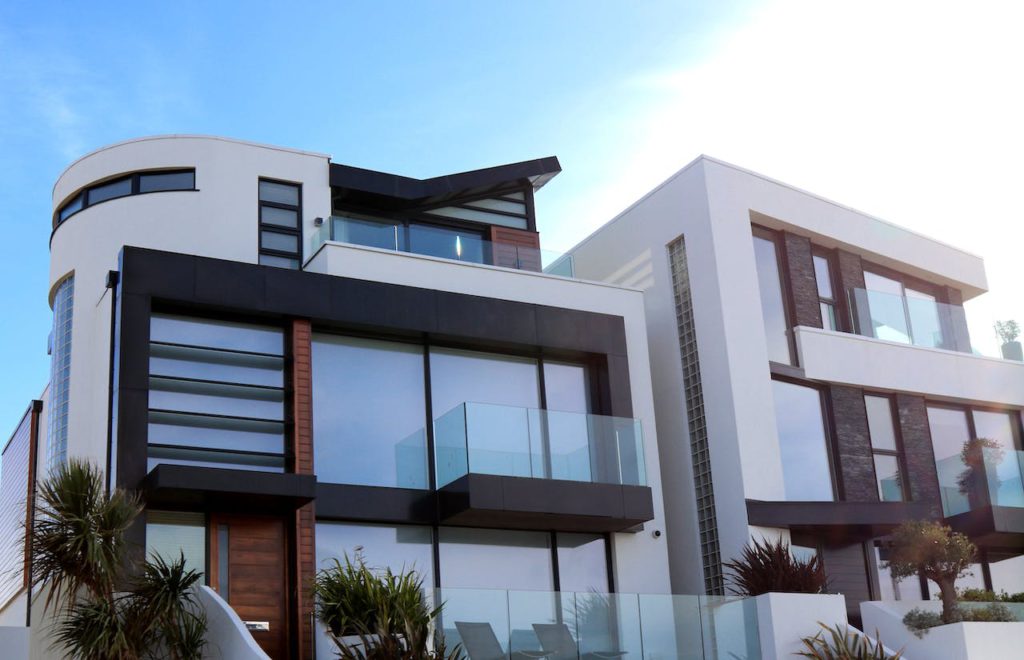Modern architecture is transforming towards sustainability, driven by the urgent need to address environmental challenges such as climate change, resource depletion, and urbanization. Architects and designers are increasingly embracing sustainable practices to create buildings that not only reduce their environmental footprint but also enhance the quality of life for occupants. In this article, we will explore how modern architecture is shaping a greener future by adopting sustainable solutions that prioritize environmental responsibility, energy efficiency, and human well-being.

The Green Building Movement
In recent years, green building movement has surged, and building estimating plays a vital role in evaluating the feasibility of sustainable design feasibility. It ensures that projects are both environmentally responsible and cost-effective. This movement also advocates for the operation of buildings that have a minimal negative impact on the environment while maximizing their positive contributions. Critical elements of green building include energy efficiency, water conservation, materials selection, indoor air quality, and sustainable site planning.
Energy Efficiency
One of the central pillars of sustainable modern architecture is energy efficiency. Structures contribute significantly to the world’s energy consumption and the emissions of greenhouse gases. To address this issue, modern architects are incorporating energy-efficient design features into their projects. These features may include passive solar design, high-performance insulation, energy-efficient lighting and appliances, and advanced HVAC systems.
Passive solar design, for instance, leverages natural sunlight and thermal mass to regulate indoor temperatures, reducing the need for artificial heating and cooling. This not only saves energy but also creates a more comfortable and pleasant indoor environment for occupants. Modern architects are increasingly integrating renewable energy sources into their designs. Solar panels, wind turbines, and geothermal systems are becoming standard features in sustainable buildings, allowing them to generate clean energy and reduce their reliance on fossil fuels.
Water Conservation
Water scarcity is a growing concern in many parts of the world, making water conservation a critical aspect of sustainable architecture. Modern architects are adopting various strategies to reduce water consumption in buildings. Low-flow plumbing fixtures, rainwater harvesting systems, and greywater recycling are techniques used to minimize water wastage. Furthermore, sustainable landscaping practices, such as xeriscaping and native plants, help reduce outdoor water usage. These landscaping choices not only conserve water but also contribute to the overall aesthetic and ecological value of the building site.
Materials Selection
The choice of materials in construction plays a significant role in the environmental impact of a building. Modern architects are increasingly opting for sustainable and locally sourced materials that have a lower carbon footprint, often guided by construction estimating services. Recycled, reclaimed, and rapidly renewable materials are also gaining popularity. Architects are focusing on reducing waste during construction by using prefabricated and modular construction methods. This not only minimizes construction waste but also speeds up the building process, reducing energy consumption during construction.
Indoor Air Quality
The quality of indoor air is vital for the health and overall well-being of those who inhabit a building. Modern architects are paying close attention to selecting materials and ventilation systems to ensure indoor air is free from pollutants and allergens. Low-VOC (volatile organic compound) paints and finishes, as well as advanced ventilation and filtration systems, are commonly incorporated into sustainable building designs.
Sustainable Site Planning
Sustainable site planning involves considering the environmental impact of a building’s location and its relationship with the surrounding ecosystem. Modern architects are increasingly designing buildings that minimize disruption to natural habitats, promote biodiversity, and reduce heat island effects. Green roofs and permeable pavements are sustainable site features that help manage stormwater runoff and provide additional green space in urban areas.
Human-Centered Design
Sustainability in modern architecture goes beyond environmental considerations; it also encompasses human well-being. Architects are embracing human-centred design principles to create spaces that enhance the quality of life for occupants. Daylighting, views of nature, ergonomic design, and access to outdoor spaces are all elements that contribute to a healthier and more comfortable living and working environment.
The Future of Sustainable Modern Architecture
As the urgency of addressing environmental challenges grows, sustainable modern architecture will likely become the norm rather than the exception. The integration of cutting-edge technology, innovative materials, and a deep commitment to environmental responsibility will shape the buildings and cities of the future. The green building movement is not limited to new construction; it also encompasses retrofitting existing buildings to improve their sustainability. Renovation projects that incorporate energy-efficient upgrades, better insulation, and sustainable materials are contributing to a greener built environment.
Modern architecture is at the forefront of the sustainability revolution, with architects and designers driving innovation in green building practices. The adoption of energy-efficient design, water conservation measures, sustainable materials, and human-centred design principles is transforming the way we conceive and construct buildings.
As we move into the future, sustainable solutions in modern architecture will continue to play a vital role in shaping a greener and more sustainable world for future generations. Architects, along with stakeholders in the construction industry, are increasingly recognizing the importance of sustainable practices in addressing the environmental challenges of our time. With ongoing advancements in technology and a growing commitment to sustainability, the field of modern architecture is poised to make even more significant strides in shaping a greener and more sustainable future for all.

